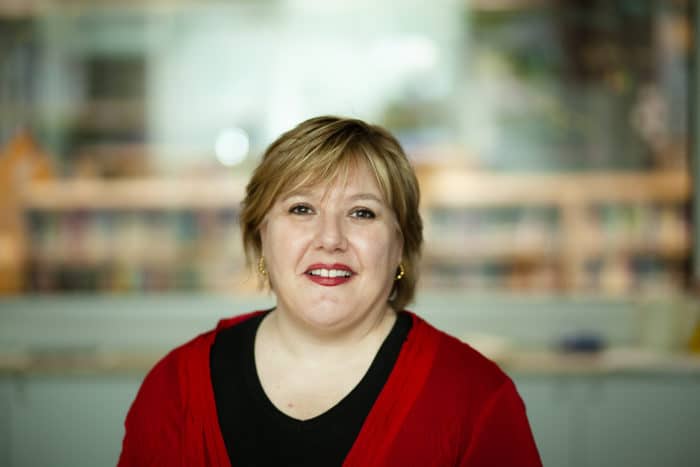In the Media: Education Today, 22 April 2021
Among them are the self-reliance that independent remote learning required and the resilience developed while toughing out a difficult time. Strathcona Girls Grammar in Melbourne saw this and chose to view it as an opportunity to build upon what had been forced on its students.
“We felt that due to the unprecedented level of responsibility that school students of all ages had to embrace during COVID and the lockdown, that this was worth both celebrating and harnessing. We began to think about the quality student output produced during the study at home period, as a vehicle for substantive teaching and learning conversations, particularly in relation to this year in terms of curriculum and its essential learnings, course planning, the structure of the day and wellbeing,” says Simone Boland, Dean of Teaching and Learning at Strathcona.
“Both staff and student feedback in surveys conducted throughout 2020 indicated that the learning disposition of autonomy and independence was highly valued, and we wanted to capitalise on that. We wanted to further foster confidence in students’ self-direction capabilities and harness effective habits of mind, so that we encouraged life-long learning and approaches to problem solving.
“Hence, we looked at reworking part of our structure of the day and timetable to look at what asynchronous learning might look like, even when students were back on the school property, to implement a program on Wednesday afternoons that utilised a hybrid blended learning model that brings together the best of remote continuous learning and classroom learning. The idea is to trial this for 2021 with Senior students Years 10–12, recalibrate where needed, with the view of transitioning this further down the school in some way.”
There was close collaboration with all Heads of Department, who took the lead in how subjects could reimagine their pedagogy for this time in particular tutorial sessions and how the weekly program schedule would look.
“It was also important that students set their own learning goals for this program. Interestingly, one of our own Year 12 students came up with the name for the program, and one of our gifted art students created the logo,” Boland says.
Strathcona wanted to set up a scaffolded program that played to students’ voice and choice – what they feel that they need in their learning to improve their approach and outcomes, so building their own toolkit of learning strategies.
Students choose from a mix of interactive 15–20-minute tutorial sessions that cover effective notetaking, study and exam skills, as well as a host of other aspects such as how to use memory, retrieval practice, how to elaborate on answers, application question techniques, mnemonic devices, mind-mapping, colour coding and using an Excel spreadsheet to name a few.
Students then apply that skill to specific work they bring with them in a subject, while the teacher is there to facilitate for another 30 mins. All up one period of time equaling 50 minutes.
At other times, Masterclasses are offered to drill down into concepts or student can simply have a self-directed learning session where they work independently or consult with a VCE teacher, one on one to get extra help with their work or to ask questions, which takes a whole period. In this block of time (covering a double period after lunch), most VCE teachers are available for extra tuition or conferencing. Students are encouraged to form study groups to aid each other in the understanding of material.
“Students here at Strathcona have a drive to succeed and do well, and we feel that the motivation around this program has to do with students’ desire to participate in the learning process. We wanted to give them a further sense of control and put them in the driver’s seat for their own learning. We also know that an extrinsically motivated student will perform in order to obtain the reward of improved results, particularly in assessment tasks and SACs.
“To maintain focus and goodwill, these sessions also had to be threat free and offer varied experiences, as well as giving them surveys to provide real time input into the sessions being offered, so we could tailor the sessions to suit demand, interest and need.
“We also insisted that students have a learning goal outlined at the beginning of the year, so this also provides a clear objective for students on what they want toa achieve, to give meaning and motivation for the program,” she says.
“From the feedback, many students are feeling that the Term 1 program has been successful, and many are trying to apply what they have learnt. Some students want even more of this time to be used to apply their new skills or to help them develop study/thinking skills personally tailored to them. Others want an even broader choice of options and more of an opt in system to operate. Even more students see the value in seeking out their teachers for more individualised help before SACs and to simply use this time for self-directed study, so they can prepare and learn at their own pace.”
Now, every Wednesday afternoon is set aside in all Years 10–12 timetables, periods 5 and 6 (100 mins) for students to participate in the program.
So could this program have happened without COVID? Maybe, but the pandemic certainly sped up its creation.
“Like everything with COVID, it has accelerated the transformation of and implementation of new programs and initiatives, and in particular, fast forwarded the thinking, learning and understanding by educators that we now need to do things differently; reimagine schooling and the school day to better enable our young people to engage with their own way of learning and to equip them with skills to cope with an increasingly unpredictable, uncertain and complex world. By teaching and reinforcing to them strategies on ‘how to learn’ and how to navigate issues and problems, we equip them for a future world,” Boland says.


